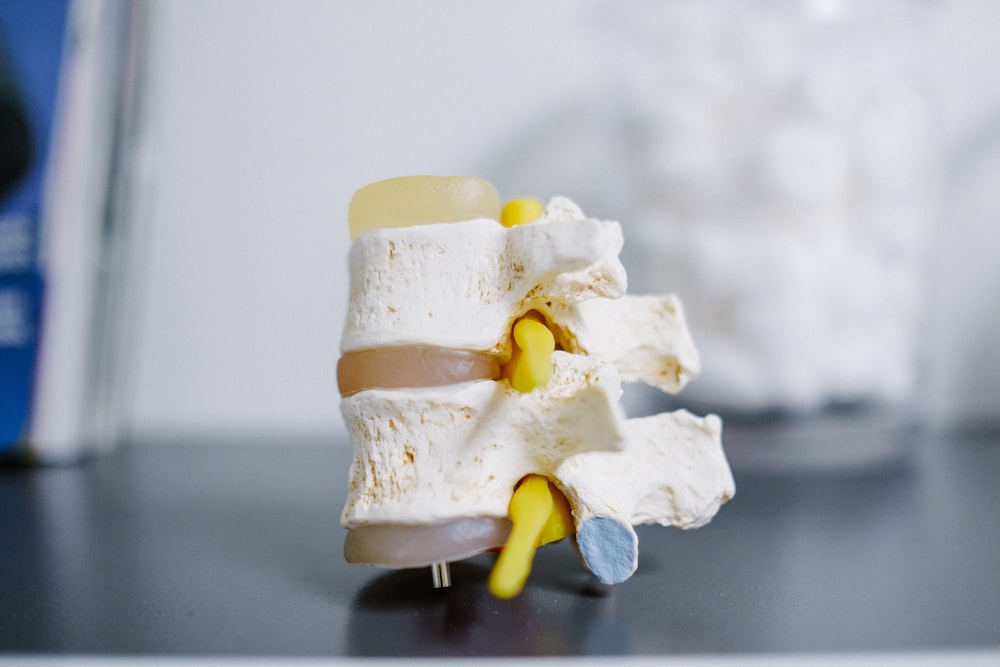目次
骨粗鬆症性椎体骨折例の長期的なQOLを向上させるには?
骨粗鬆症性の椎体骨折後には受傷後長期間が経過しても腰背部痛が持続するケースが少なくありません.
長続きする腰背部痛はQOLを低下させる要因にもなります.
今回は骨粗鬆症性椎体骨折例の長期的なQOLを向上させるにはどういった点に着目すればよいのかを考えるうえで参考になる論文をご紹介させていただきます.

今回ご紹介する論文
Spine J. 2022 Nov 16;S1529-9430(22)01012-9. doi: 10.1016/j.spinee.2022.11.012. Online ahead of print.
Factors affecting the quality of life in the chronic phase of thoracolumbar osteoporotic vertebral fracture managed conservatively with a brace
Hiroyuki Inose 1, Tsuyoshi Kato 2, Shoichi Ichimura 3, Hiroaki Nakamura 4, Masatoshi Hoshino 4, Shinji Takahashi 4, Daisuke Togawa 5, Toru Hirano 6, Yasuaki Tokuhashi 7, Tetsuro Ohba 8, Hirotaka Haro 8, Takashi Tsuji 9, Kimiaki Sato 10, Yutaka Sasao 11, Masahiko Takahata 12, Koji Otani 13, Suketaka Momoshima 14, Takashi Hirai 15, Toshitaka Yoshii 15, Kunihiko Takahashi 16, Atsushi Okawa 15
Affiliations expand
PMID: 36400395 DOI: 10.1016/j.spinee.2022.11.012
今回ご紹介する論文は2022年に掲載された論文です.
研究の背景
Background context: Although osteoporotic vertebral fractures (OVFs) are the most common type of osteoporotic fracture, few reports have closely investigated the factors contributing to the quality of life (QOL) in the chronic phase after thoracolumbar OVFs using detailed radiographic evaluation.
骨粗鬆症性椎体骨折(OVF)は最も多い骨折でありますが,骨粗鬆症性椎体骨折後慢性期における生活の質(QOL)に寄与する因子を詳細なX線評価により詳細に検討した報告はほとんどありません.
研究の目的
Purpose: This study aimed to identify factors associated with the QOL in the chronic phase after thoracolumbar OVF.
この研究では骨粗鬆症性椎体骨折後の慢性期におけるQOLに関連する因子を明らかにすることを目的としております.
研究デザイン
Design: Post-hoc analysis of a prospective randomized study.
この研究では前向き無作為化研究の事後解析を行っております.
研究対象
Patient sample: Participants included 195 patients with fresh thoracolumbar OVF managed conservatively with a brace who were available for radiographic analysis 48 weeks after injury.
対象は受傷後48週目にX線解析が可能であったコルセットによる保存的治療を受けた新鮮骨粗鬆症性椎体骨折例195例となっております.
アウトカム測定
Outcome measures: The degree of QOL impairment at 48 weeks after thoracolumbar OVF was assessed using the Japanese three-level version of the EuroQol five-dimensional questionnaire (EQ-5D) score.
骨粗鬆症性椎体骨折受傷後48週におけるQOL障害の程度をEuroQol 5次元質問票(EQ-5D)スコアの日本語3段階版で評価しております.
研究方法
Methods: Univariate and multivariate regression analyses were used to evaluate the relationships between the QOL and radiographic factors.
単変量回帰分析および多変量回帰分析を用いて,QOLとX線撮影因子との関係を評価しております.
研究結果
Results: The univariate analysis showed that age, analgesic use, T10/L5 Cobb angle on magnetic resonance imaging (MRI), subsequent vertebral fracture, and nonunion were significantly associated with the EQ-5D score at 48 weeks after thoracolumbar OVF. The multiple regression analysis showed that nonunion, analgesic use, subsequent vertebral fracture, and sacral slope on MRI were independently associated with the EQ-5D score at 48 weeks after thoracolumbar OVF. Receiver operating characteristic analysis for the deterioration of QOL showed that the cutoff value for sacral slope on MRI was 35 degrees.
単変量解析では,年齢,鎮痛剤使用,磁気共鳴画像(MRI)上のT10/L5コブ角,その後の椎体骨折,骨癒合不全が骨粗鬆症性椎体骨折後48週におけるEQ-5Dスコアと有意に関連しておりました.
重回帰分析では骨癒合遷延,鎮痛剤使用,その後の椎体骨折,MRI上の仙骨傾斜が骨粗鬆症性椎体骨折後48週目のEQ-5Dスコアと独立して関連することが示されました.
QOLの悪化に関するReceiver Operating Characteristic Analysisの結果,MRI上の仙骨傾斜カットオフ値は35度でありました.
研究の結論
Conclusions: This study demonstrated that nonunion, subsequent vertebral fracture, and lower sacral slope were independently associated with poorer QOL in the chronic phase of thoracolumbar OVF managed conservatively with a brace. Therefore, improving or preventing these factors in patients with thoracolumbar OVF in the chronic phase may improve the QOL of the affected patients.
この研究ではコルセットを使用して保存的に管理された骨粗鬆症性椎体骨折慢性期において,骨癒合不全,その後の椎体骨折,仙骨傾斜角の減少が独立してQOLの低下と関連することが示されました.
したがって骨粗鬆症性椎体骨折慢性期において,これらの因子を改善または予防することは,QOLを改善する可能性があります.
今回は骨粗鬆症性椎体骨折例の長期的なQOLを向上させるにはどういった点に着目すればよいのかを考えるうえで参考になる論文をご紹介させていただきました.
正直なところ理学療法でどうにかなりそうな要因は少ないですが再骨折予防というのがQOLを改善させるためのヒントになりそうですね.






